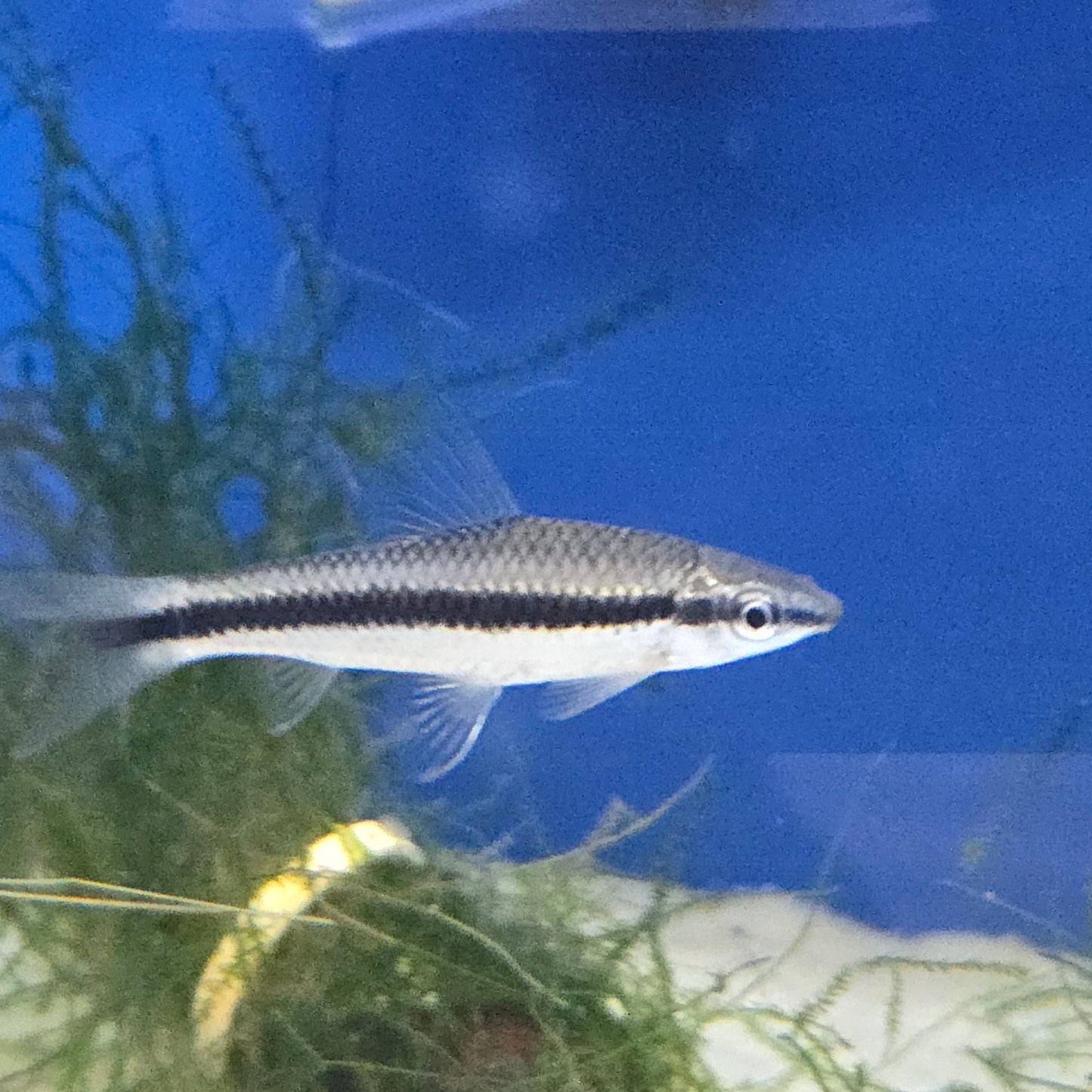Fancy Fish and Aquascapes
Siamese Algae Eater ~ Crossocheilus oblongus
Siamese Algae Eater ~ Crossocheilus oblongus
Couldn't load pickup availability
The Siamese Algae Eater is a hardworking freshwater fish renowned for its ability to control algae in aquariums. Native to the rivers and streams of Southeast Asia, this peaceful and active species is prized for its algae-grazing behavior and adaptability, making it a popular choice for community tanks.
- Size: 5-6 inches
- Lifespan: 8-10 years
- Temperament: Peaceful, active
- Group/Solitary: Can be kept singly or in small groups of 3-5
- Food: Omnivorous; algae, sinking pellets, blanched vegetables, live/frozen foods (bloodworms, brine shrimp)
- Water Requirements: 75-79°F, pH 6.5-7.5, soft to moderately hard water
Care Instructions
Siamese Algae Eaters inhabit fast-moving rivers and streams with sandy or gravelly substrates and abundant plant life. To replicate this environment in an aquarium, provide a spacious tank of at least 30 gallons with a soft substrate, live plants, and plenty of hiding spots created by driftwood and rocks. Good water flow and oxygenation are essential, as they are used to well-oxygenated waters.
These fish are excellent algae grazers, feeding on a variety of algae types, including the tough black beard algae. In addition to algae, their diet should include sinking pellets, blanched vegetables like zucchini or cucumber, and occasional live or frozen foods such as brine shrimp or bloodworms. A balanced diet ensures their health and vibrant coloration.
Siamese Algae Eaters are generally peaceful and can be kept in community tanks with similarly sized, non-aggressive species such as tetras, rasboras, and gouramis. While they are sociable, keeping them in groups can reduce stress and encourage natural behaviors, though overcrowding should be avoided.
Fun Fact: The Siamese Algae Eater is one of the few fish capable of eating black beard algae, a common nuisance in aquariums. This unique ability, combined with their active and curious nature, makes them a valuable addition to aquascaped tanks.
Share


